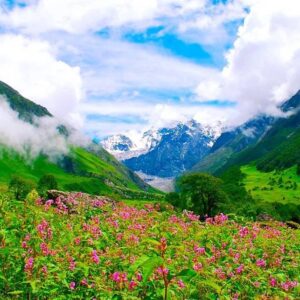List Of Top 30 Interesting Facts About Earth

Planet Earth, that luminous azure orb, has captivated human curiosity since the dawn of our existence. And rightfully so. Not only is it our abode, the cradle of life as we recognize it, but it stands as the solitary celestial sphere known to harbor life. Throughout the annals of the past few centuries, our understanding of Earth has burgeoned, further intensifying our intrigue.
Interesting Facts About Earth
Blue Planet:
Earth earned the moniker “Blue Planet” owing to the abundance of water, which imparts a distinctive blue hue when observed from space.
Dynamic Earth:
The lithosphere, Earth’s outermost layer, is segmented into tectonic plates that perpetually shift, giving rise to occurrences such as earthquakes and volcanic eruptions.
Read More: Effect Of Climate Change On Earth
Unique Magnetic Field:
Earth has a magnetic field generated by its molten iron-nickel core. This field protects the planet from solar winds and cosmic radiation.
The Great Rift Valley:
The Great Rift Valley, a vast geographical trench, is visible from space and extends from Lebanon in Asia to Mozambique in Southeast Africa.
Mount Everest:
Mount Everest, the world’s highest peak, continues to rise at a rate of about 4 millimeters per year due to tectonic plate movements.
Read More: Zealandia, Earth’s Hidden 8th Continent
The Mariana Trench:
The Mariana Trench, located in the western Pacific Ocean, is the deepest part of Earth’s oceans, reaching depths of over 36,000 feet (10,994 meters).
Earth’s Moon:
The Moon is Earth’s only natural satellite, and its gravitational pull influences tides on our planet.
Water, Water Everywhere:
About 71% of Earth’s surface is covered by water, with oceans holding approximately 96.5% of the planet’s total water.
The Ozone Layer:
The ozone layer in Earth’s atmosphere absorbs the majority of the sun’s harmful ultraviolet (UV) radiation, protecting life on the planet.
Read More: 11 Incredible Terrace Fields Around the World
Biological Diversity:
Earth is home to an estimated 8.7 million species, though only about 1.2 million have been scientifically documented.
The Green Lungs:
Forests, often referred to as the “lungs of the Earth,” produce approximately 20% of the world’s oxygen through the process of photosynthesis.
Giant Impact Hypothesis:
The Moon is believed to have formed from debris resulting from a massive collision between Earth and a Mars-sized celestial body.
The 24-Hour Day:
Earth takes approximately 24 hours to complete one rotation on its axis, defining a day.
Read More: Top 12 Countries to See Natural Beauty Around the World
The 365-Day Year:
Earth completes one orbit around the Sun in about 365.25 days, defining a year.
The Aurora Borealis and Australis:
The Northern Lights (Aurora Borealis) and Southern Lights (Aurora Australis) are dazzling light displays caused by charged particles from the Sun interacting with Earth’s magnetic field.
The Challenger Deep:
The deepest point in the Mariana Trench, known as the Challenger Deep, is approximately 36,070 feet (10,994 meters) deep.
Earth’s Atmosphere:
Earth’s atmosphere is composed mainly of nitrogen (78%) and oxygen (21%).
Largest Desert:
Antarctica holds the distinction of being the largest desert on Earth, given its minimal precipitation.
Read More: Top 10 Nature-Friendly Countries in the World
The Ring of Fire:
The Ring of Fire constitutes a horseshoe-shaped region encircling the Pacific Ocean, renowned for its heightened seismic and volcanic activity.
The Snowball Earth Hypothesis:
Researchers suggest that Earth underwent phases of intense glaciation referred to as “Snowball Earth” events, during which the planet was nearly entirely encased in ice.
Continental Drift:
The theory of continental drift, proposed by Alfred Wegener, suggests that continents were once part of a single supercontinent called Pangaea.
Read More: Top 10 Most Beautiful Waterfalls in the World
The Goldilocks Zone:
Earth is located in the habitable zone, often called the Goldilocks Zone, where conditions are just right for liquid water to exist.
The Coriolis Effect:
Earth’s rotation causes the Coriolis effect, influencing global wind patterns and ocean currents.
The Dead Sea:
The Dead Sea, bordered by Jordan and Israel, is so salty that people can effortlessly float on its surface.
Age of Earth:
Scientists estimate that Earth is approximately 4.54 billion years old.
The Leaning Tower of Pisa’s Influence on Earth:
The construction of the Leaning Tower of Pisa, which has a slight tilt, affects the local groundwater levels.
Read More: Top 10 Most Naturally Beautiful Countries in the World
Earth’s Magnetosphere:
Earth’s magnetosphere extends far beyond its atmosphere, interacting with the solar wind and protecting the planet from harmful particles.
The Himalayas:
The Himalayas, home to the world’s highest peaks, are still rising due to the collision between the Indian and Eurasian tectonic plates.
Earth’s Rotation Slowing Down:
Earth’s rotation is gradually slowing down, leading to the addition of leap seconds periodically to keep atomic time in sync with Earth’s rotation.
Read More: Best Islands to Visit Around the World
The Holocene Epoch:
We currently live in the Holocene epoch, an interglacial period characterized by relatively stable climatic conditions.




